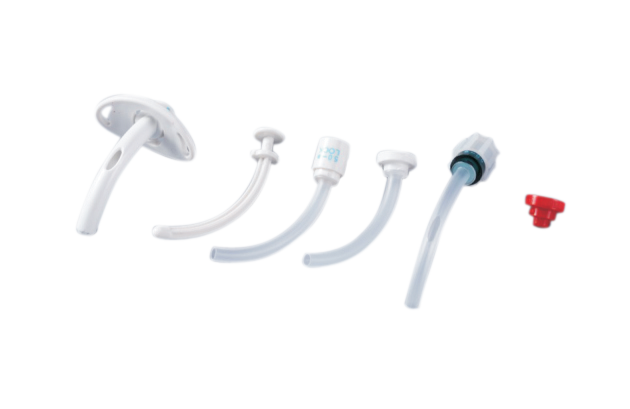
TTUF
The TTUF tracheostomy tube is a new type of tube that has a fenestra, or opening, on the end. This allows for better ventilation and less risk of infection.
| Ref. No.: | Size: | Qty. Cs: |
|---|---|---|
| NMR100833 | 5.0 | 100 |
| NMR100838 | 6.5 | 100 |
| NMR100843 | 7.0 | 100 |
The TTUF tracheostomy tube is a new type of tube that has a fenestra, or opening, on the end. This allows for better ventilation and less risk of infection.
The TTUF Tracheostomy Tube Uncuffed With Fenestra is a tracheostomy tube that is designed for people who have had a tracheostomy. The tube has a fenestra, which is a small opening in the side of the tube that allows air to pass through. The fenestra is covered with a thin layer of silicone, which helps to keep the airway open and prevents the tube from becoming blocked. The TTUF Tracheostomy Tube Uncuffed With Fenestra is available in different sizes, so it can be used for people of all ages.
There are many different types of TTUF tubes, but they all have one thing in common: they have a fenestra, or small opening, at the end. This opening allows for drainage of secretions and helps to keep the airway clear. The most common type of TTUF tube is the Shiley tube, which is made by Covidien. Other manufacturers include Smiths Medical and Teleflex.
The Shiley tube has a number of different sizes, ranging from 4.0mm to 10.0mm. The smallest diameter tube is usually used for infants and children, while the larger diameters are reserved for adults. The length of the tube also varies, depending on the size of the patient's neck.
The Smiths Medical TTUF tube is similar to the Shiley tube, but it has a slightly different shape. It is also available in a variety of sizes and lengths.
The Teleflex TTUF tube is the newest type of TTUF tube on the market. It is made from a flexible material that conforms to the contours of the patient's neck and throat. This makes it more comfortable to wear and less likely to cause irritation. It is available in sizes ranging
When it comes to tracheostomy tubes, there are a variety of options available. One option is the TTUF tube, which stands for tracheostomy tube uncuffed with fenestra. This type of tube is designed to be used without a cuff, and it has a small opening (fenestra) near the tip that allows air to escape.
There are both pros and cons to using a TTUF tube. Some of the pros include:
-No need for a cuff, which can save on costs
-The fenestra helps to reduce the risk of aspiration
-May be more comfortable for the patient than other types of tracheostomy tubes
However, there are also some potential drawbacks to using a TTUF tube. These include:
-The fenestra can make it more difficult to suction secretions
-There is a greater risk of dislodgement due to the lack of a cuff
-Some patients may find the tube less comfortable than other types
There are several indications for use of a TTUF Tube. First, it may be indicated when patients need long-term ventilation and cannot be easily weaned off of the ventilator. Second, it may be indicated in patients with very high airway pressures who are at risk for developing tracheal damage. Third, it may be indicated in patients who have had previous tracheostomies that have failed or become blocked. Finally, it may be indicated in patients who have had surgery on their upper airway that has resulted in scarring or narrowing of the airway.
A TTUF tube is a tracheostomy tube that is uncuffed and has a fenestra. This type of tube is typically used for patients who have had a tracheostomy for an extended period of time.
Inserting a TTUF tube can be done in a few simple steps:
1. Clean the patient's skin around the stoma site with an antiseptic solution.
2. Insert the tube into the stoma, making sure that the fenestra is facing downwards.
3. Once the tube is in place, secure it with tape or a tracheostomy collar.
4. Connect the tube to a suction device and ensure that it is functioning properly.
If you or your child has a tracheostomy tube (TTUF) with a fenestra, it is important to know how to properly care for the device. Here are some tips on caring for your TTUF:
-Clean the fenestra and surrounding skin daily with soap and water. Be sure to rinse all soap off the skin.
-Gently clean the inside of the fenestra with a cotton swab soaked in saline solution.
-Apply a thin layer of petroleum jelly around the fenestra to help keep the skin moisturized.
-Check the fenestra regularly for any signs of infection, such as redness, swelling, or discharge.
If you have any questions about caring for your TTUF, be sure to talk to your child's doctor or nurse.
The TTUF tracheostomy tube is a great option for those who need a tube that is uncuffed and has a fenestra. This type of tube is perfect for those who have difficulty speaking or swallowing, as it will allow them to do so more easily. If you or someone you know needs a tracheostomy tube, be sure to ask your doctor about the TTUF.